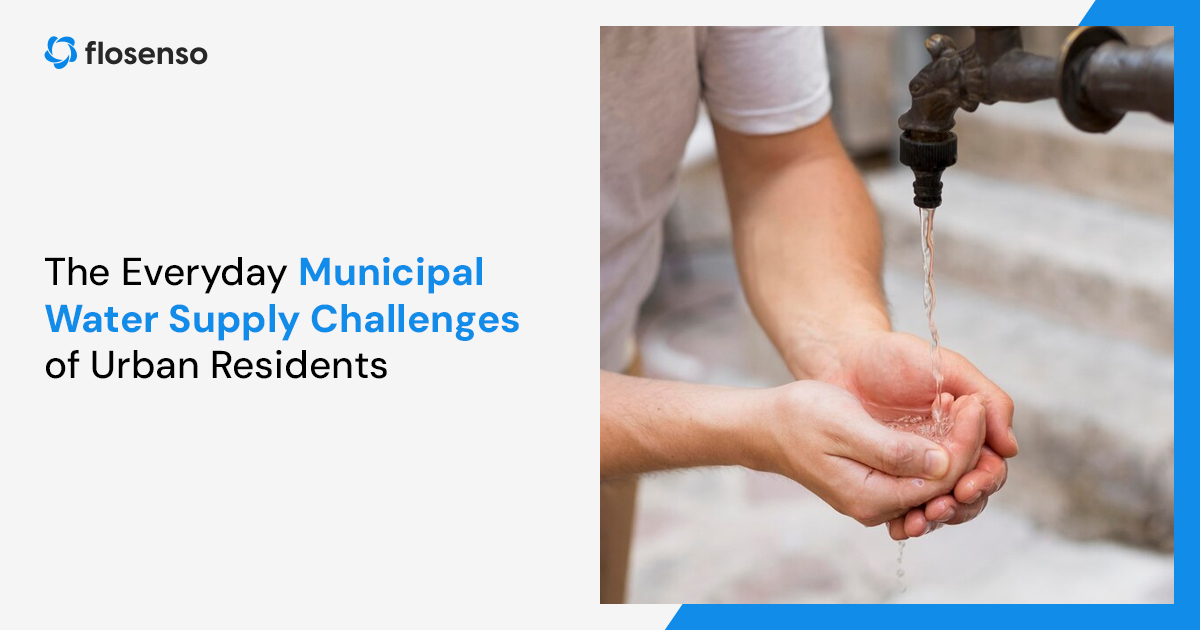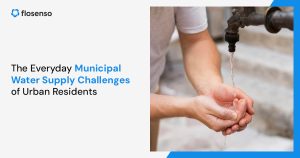If you’ve ever had to wake up at odd hours to fill buckets or struggle with water pressure while doing laundry, you’re not alone. For several urban residents, dealing with municipal water supply problems has become an everyday struggle. Unpredictable schedules, low pressure, unexpected cuts, and wastage make managing water a hassle.
Let’s visit some common water supply problems and how you can tackle them.
Municipal water supply issues
For many city dwellers, municipal water supply is e a game of chance, some days, the taps flow smoothly; other days, they run dry without warning. Rapid urbanization, outdated infrastructure, and growing demand have turned water management into a constant challenge, leaving households to navigate unpredictable supply schedules and unexpected shortages.
Aging pipelines leak more than office rumors, power outages bring pump systems to a standstill, and seasonal shortages, especially during peak summer, turn securing water into a daily struggle. Many residents resort to keeping their motors running “just in case,” leading to unnecessary wastage, pump dry runs and rising water bills. Meanwhile, reliance on water tankers not only adds to household expenses but also contributes to unsustainable water extraction.
Here are some everyday challenges urban residents face with municipal water supply.
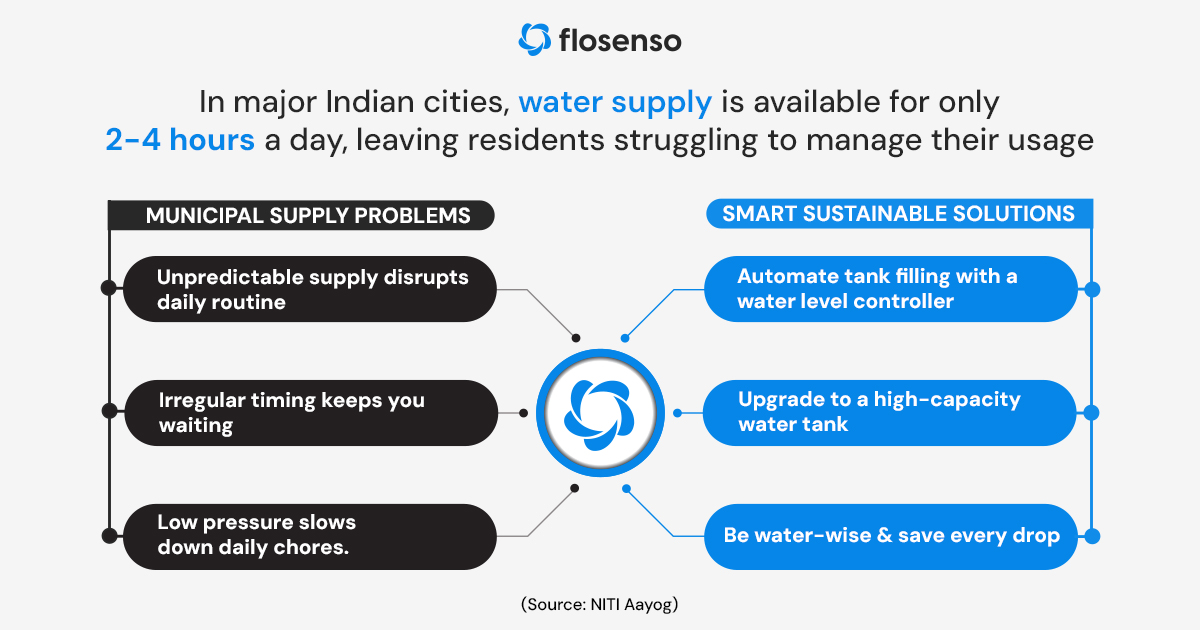
Inconsistent timings and indefinite waiting periods
An unpredictable water supply system can throw your entire routine into chaos, and that’s exactly what 60% of Indian households experience (Source: NITI Aayog). Water arrives at odd hours, often in the dead of night or early morning, forcing people into midnight bucket-filling marathons just to secure their daily needs. With no fixed schedule, many urban residents are left guessing, either waiting indefinitely for the taps to flow or missing out entirely.
The inconvenience doesn’t stop there. Odd supply timings mean you might have to wake up at 4 AM just to fill a few buckets, hardly an ideal start when you have a packed schedule ahead. Storing water in large drums or buckets becomes the next challenge, adding to clutter and even increasing the risk of contamination. It’s an exhausting cycle that no one should have to deal with.
So how do you make life easier? You must consider installing an automatic water level controller that ensures water is stored efficiently without manual effort. Investing in overhead water tanks with smart sensors eliminates the stress of constantly checking and storing water, letting you focus on what really matters in your day.
The frustration of low water pressure
Living in a top-floor apartment comes with its unique set of challenges, and one of the most frustrating is dealing with low water pressure. Imagine, if you step into the shower, ready for a refreshing experience, only to be greeted by a weak drizzle instead of a satisfying flow. This problem is common, with nearly 35% of urban households (Source: Ministry of Jal Shakti) experiencing low water pressure, making daily tasks like bathing or cleaning feel like a chore.
So, what causes this issue? Well, multi-story buildings often suffer from inadequate pumping infrastructure, while aging pipelines can further slow down the water supply. On top of that, sudden surges in demand, such as everyone deciding to shower at the same time, can leave you waiting for water to make its way to the top. The effects are not just inconvenient, they can also be frustrating. Shampoo stays stuck in your hair as rinsing takes forever, filling a bucket feels like a full-time job, and even appliances like RO filters, geysers, and washing machines struggle to function when water pressure is too low.
And how do you fix this annoying problem? A pressure booster pump can significantly improve water flow in high-rise apartments, ensuring a steady supply even on upper floors. Regularly checking your pipes for blockages and leaks can prevent unnecessary pressure drops. It’s also a good idea to coordinate with your building’s management to ensure an optimized water distribution system so that no one is left struggling with a trickle.
Water cuts throw a sudden surprise
Unannounced water cuts are a harsh reality in many urban areas, often due to periodic maintenance or seasonal shortages. The worst part? There’s usually no prior notice, catching households completely off guard. In fact, about 70% of Indian cities (Source: Central Water Commission, 2023) face frequent water supply shutdowns due to reasons like maintenance, seasonal shortages, or infrastructure issues.
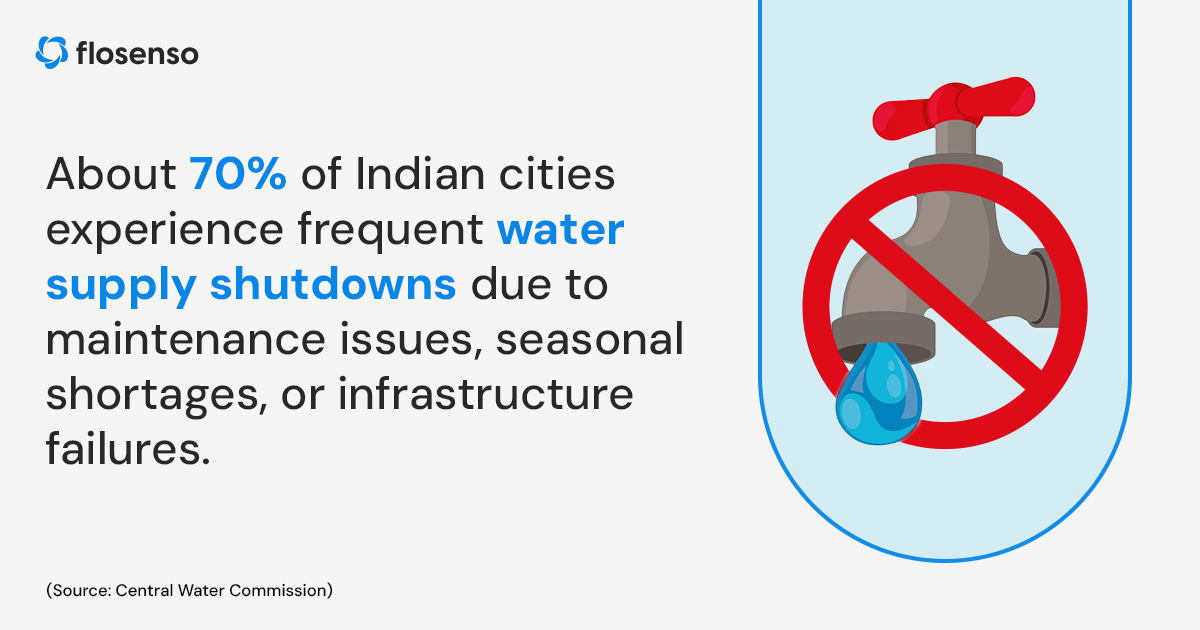
So, why does this happen? Often, pipeline repairs result in supply disruptions with no prior warning. Seasonal shortages, especially during the summer months, leave many cities scrambling to meet demand. And, when pumps fail or power cuts occur, the water flow stops, leaving you high and dry.
The best way to avoid these surprises is to keep a backup supply of clean water for emergencies. Installing a water supply system with an overhead tank ensures you have stored water when the municipal supply is cut off. And if your area frequently depends on tankers, scheduling deliveries in advance can save you from last-minute shortages and unnecessary stress.
Overflow and water wastage
What’s worse than running out of water? Wasting it! That’s exactly what happens when overhead tanks overflow. In fact, a single overflowing tank can waste up to 1,000 liters of water every hour (Source: World Bank). Now, imagine this happening in thousands of households every day, that’s enough water to supply an entire town!
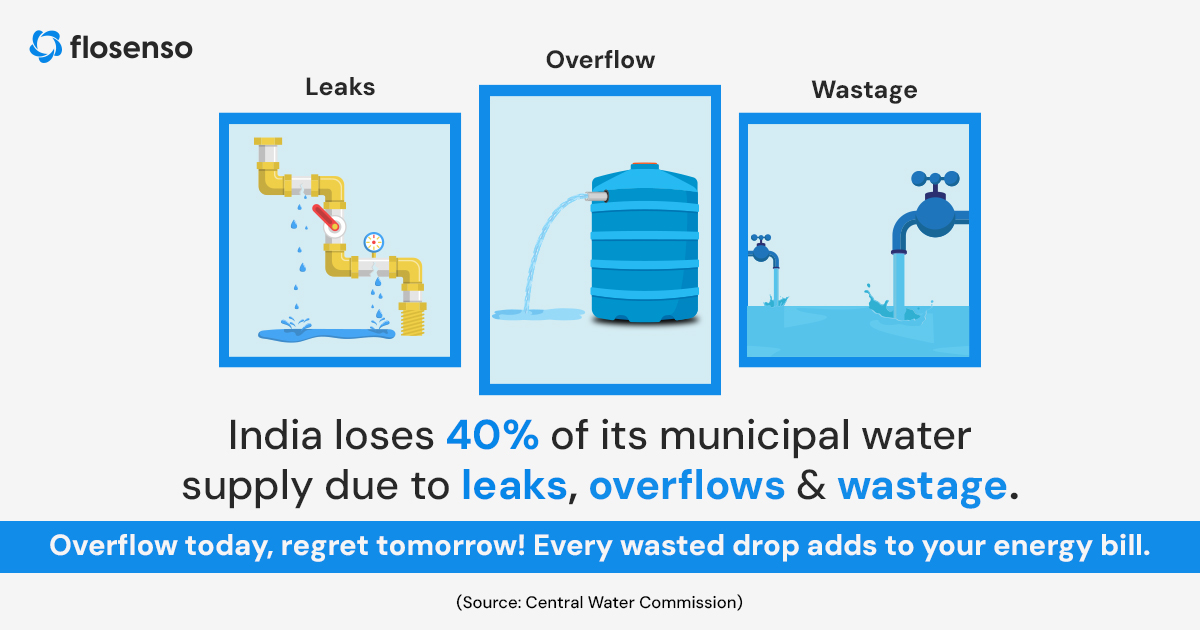
So, why does this happen? Often, people forget to turn off the water pump, leading to an uncontrollable overflow of water tanks. Many households lack proper water monitoring systems, and with unpredictable municipal supply timing, people leave the pump running “just in case.” The effects can be frustrating. You might end up with higher water bills, literally pouring money down the drain. Beyond the financial hit, every drop wasted today contributes to future water scarcity. As urban demand skyrockets, careless usage only adds to the crisis.
Simple solutions can prevent this waste. Installing an automatic water level controller ensures tanks never overflow, regulating water levels efficiently. Regular inspections of tanks and pipelines help detect leaks early, while encouraging small conservation habits, like turning off taps when not in use, can make a significant difference.
The struggle with tanker dependency
When taps run dry, most urban residents turn to the infamous water tanker guy, but not without consequences. Prices soar faster than petrol rates, especially during peak summer months. In fact, over 60% of urban households (Source: National Institute of Urban Affairs, 2023) rely on private tankers during shortages, spending thousands every year just to secure enough water.
The problem stems from unregulated pricing, where tanker operators charge whatever they please. With municipal supply being unreliable, these private services monopolize water distribution, making it a necessity rather than a choice. In cities lacking proper water storage infrastructure, the dependence on tankers becomes even more extreme.
The solution? Advocating for better municipal water planning can push authorities to improve supply consistency. Meanwhile, investing in rainwater harvesting can reduce reliance on tankers, making households more self-sufficient and resilient against shortages.
Smarter water management is the way forward
Water supply issues are a reality for urban residents, but they don’t have to disrupt your daily life. By using smart water management solutions like automatic water level controllers, pressure boosters, and rainwater harvesting, you can reduce dependency on an unreliable municipal water supply.
If you’re tired of dealing with unpredictable water supply problems, it’s time to take control. Small changes in how you store, monitor, and use water can make a huge difference in ensuring a steady and sustainable supply.
Flosenso - The smart way to manage water efficiently
The Flosenso app-based water level controller, is designed to make your life convenient. It eliminates the stress of tank overflows, ensures efficient water storage, and helps you cut down on unnecessary water expenses. Whether you’re dealing with irregular water supply or want to optimize water storage, Flosenso offers a hassle-free solution. Say goodbye to water wastage and embrace smarter water management.

